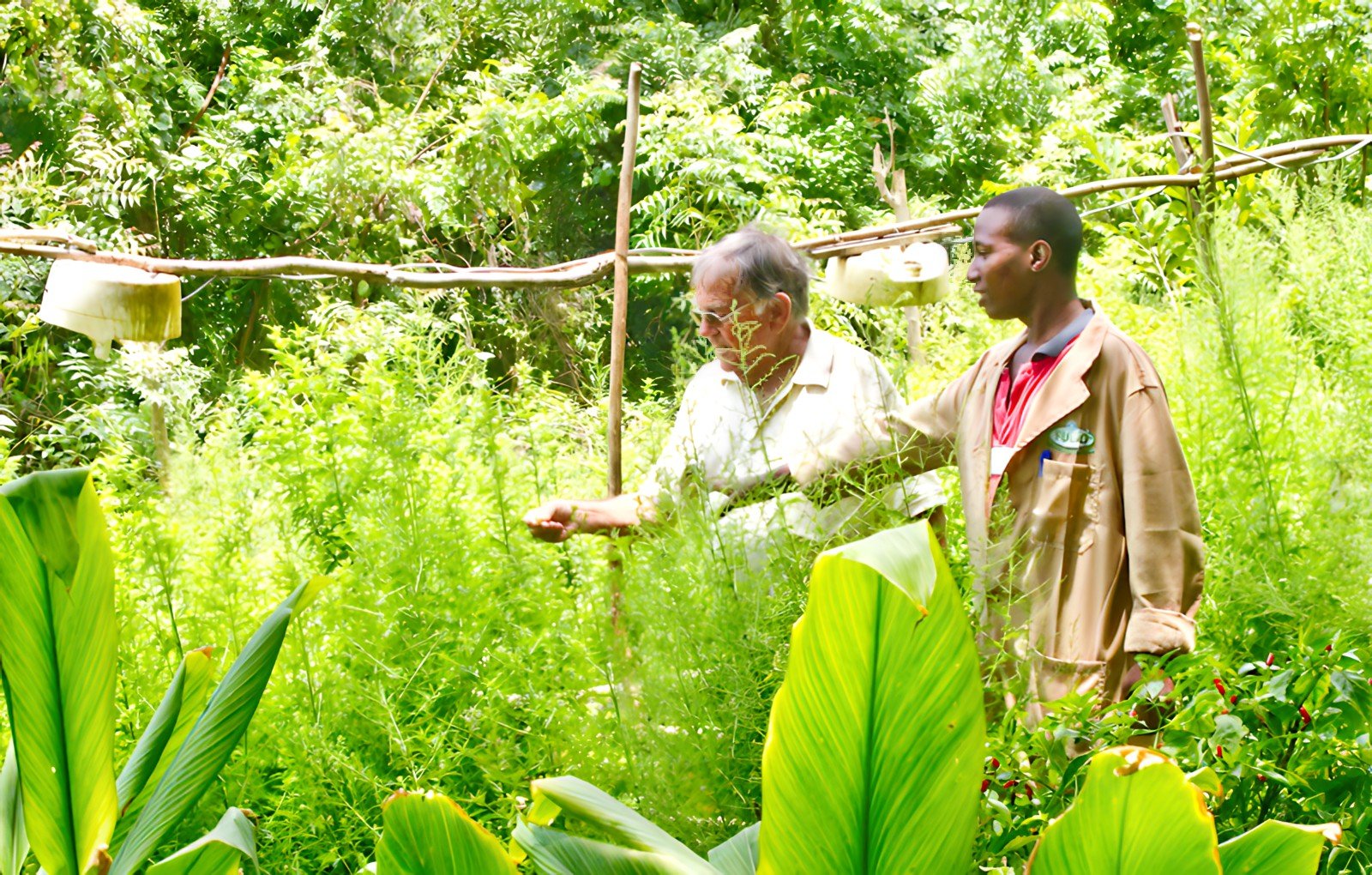
Dr. René Haller
Dr. Rene Haller is a naturalist, trained in Horticulture, Landscaping and Tropical Agronomy. He came to Africa in 1956 to manage a coffee plantation on Mount Kilimanjaro in Tanzania. Three years later he was recruited by the Bamburi Cement Company to head up their Garden Department.
He went far beyond his brief. In the 1970s, he started a unique ecological experiment, rehabilitating the industrial quarries that scarred the Mombasa coastline into thriving ecosystems.
In 1959, Dr. Haller was employed by the Bamburi Cement Company to produce food and vegetables for the employees of the cement company. In 1970, he persuaded them to extend his remit by rehabilitating the cement quarries along the Mombasa coastline which had been left barren by years of excavations – a formidable task.
The quarry floor was as barren as the moon; the sun-baked air temperatures were up to 40 degrees celsius and the water was saline. After trying over 26 species of trees, Dr. Haller discovered that only the casuarina tree, a native Australian species, could grow in these severe conditions. Its leaves are bunched together like pine needles, protecting them from losing moisture through evaporation.
After 10 months, Dr Haller looked at healthy casuarinas trees growing wild on the sand dunes as the early seedlings had started to wither. He noticed that the dense hair roots contained a cocktail of micro-organisms living in a symbiotic relationship necessary to the trees. After he introduced these into the quarry, the trees began to flourish.
In order to decompose the mass of needles, Dr. Haller introduced local ‘red legged’ millipedes who he had noticed actually ate these needles. By feeding on these needles and turning them into humus, the first layer of soil was formed.
Dr. Haller went on to plant over 1 million trees in the quarry and after ten years a new balanced micro-climate had allowed new plants to flourish. The casuarinas trees were thinned out and native species were introduced, which attracted many insects, butterflies, birds, snakes and so much more to the newly established ecosystem.
Subsequently renamed ‘The Haller Park’, the quarries now contain a wide species of local wild animals as well as a very diverse selection of plants and trees. Haller Park now provides a sanctuary for over 30 species from the IUCN Red list of endangered species.
Dr Haller was recognised as a UNEP Global Laurete in the 500 Roll of Honour for his environmental achievements.
Throughout his lifetime, Dr Haller went on adapting his agricultural techniques and approach, applying his knowledge to other degraded landscapes along the coastline of Kenya. He replicated his restoration success with Nguuni Nature Sanctuary, which was once a Jurassic shale quarry mined for cement production.
Dr. Haller retired in the 1990’s, and started The Baobab Trust, a non-profit organisation committed to supporting community livelihoods through environmental conservation.
In 2004, Dr Haller established The Haller Foundation, a Kenyan NGO and UK Charity supporting smallholder farmers through regenerative agriculture and nature-based solutions to revive degraded landscapes and live self-sufficient livelihoods.
Today, Dr Haller remains at the forefront of Nguuni’s operations, overseeing activities and wildlife conservation.
